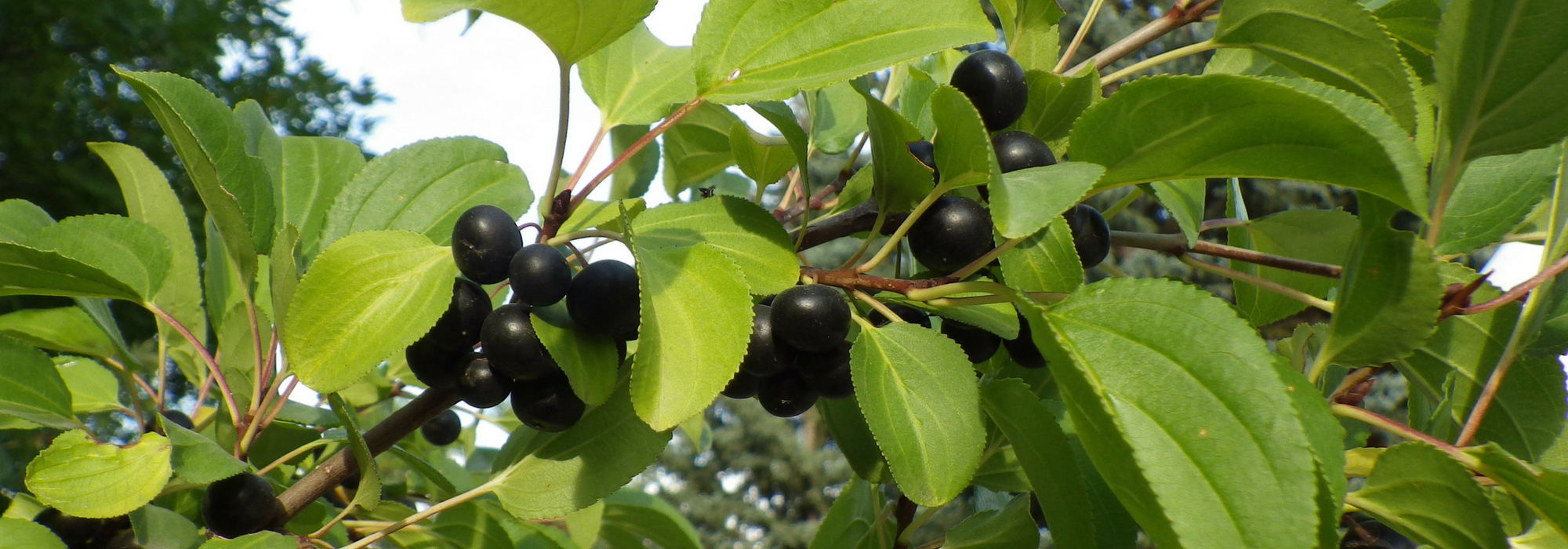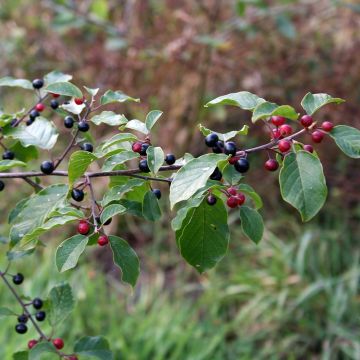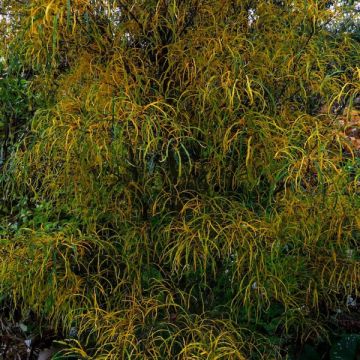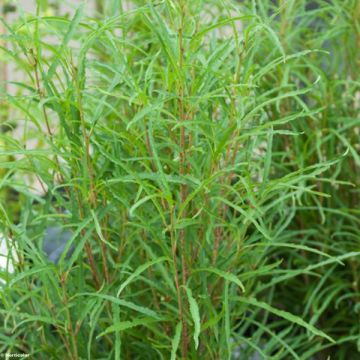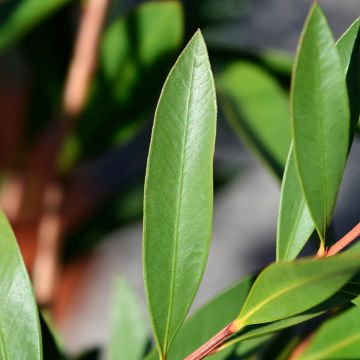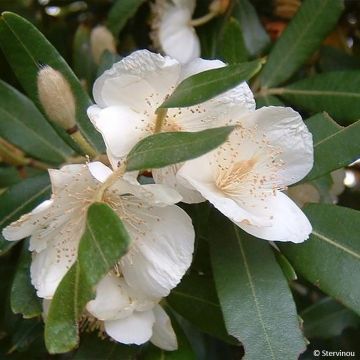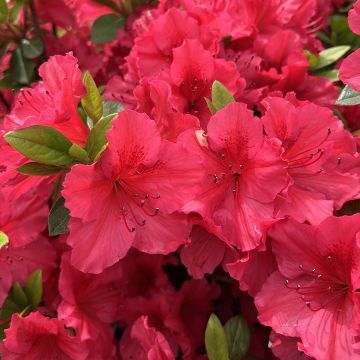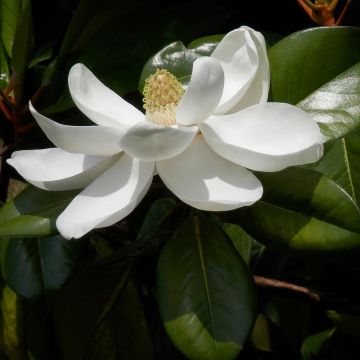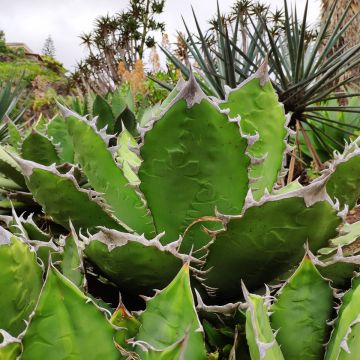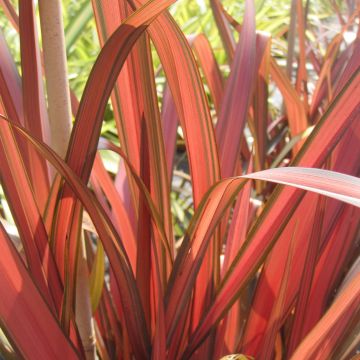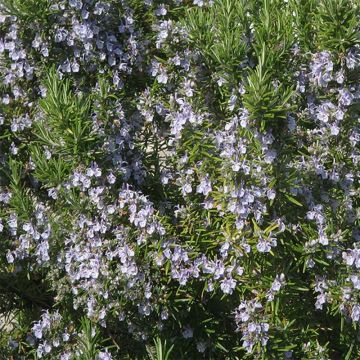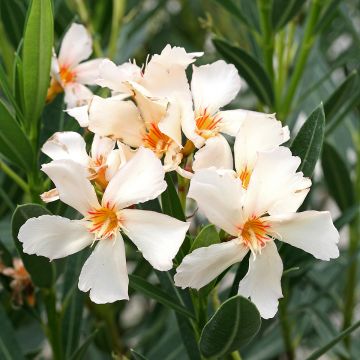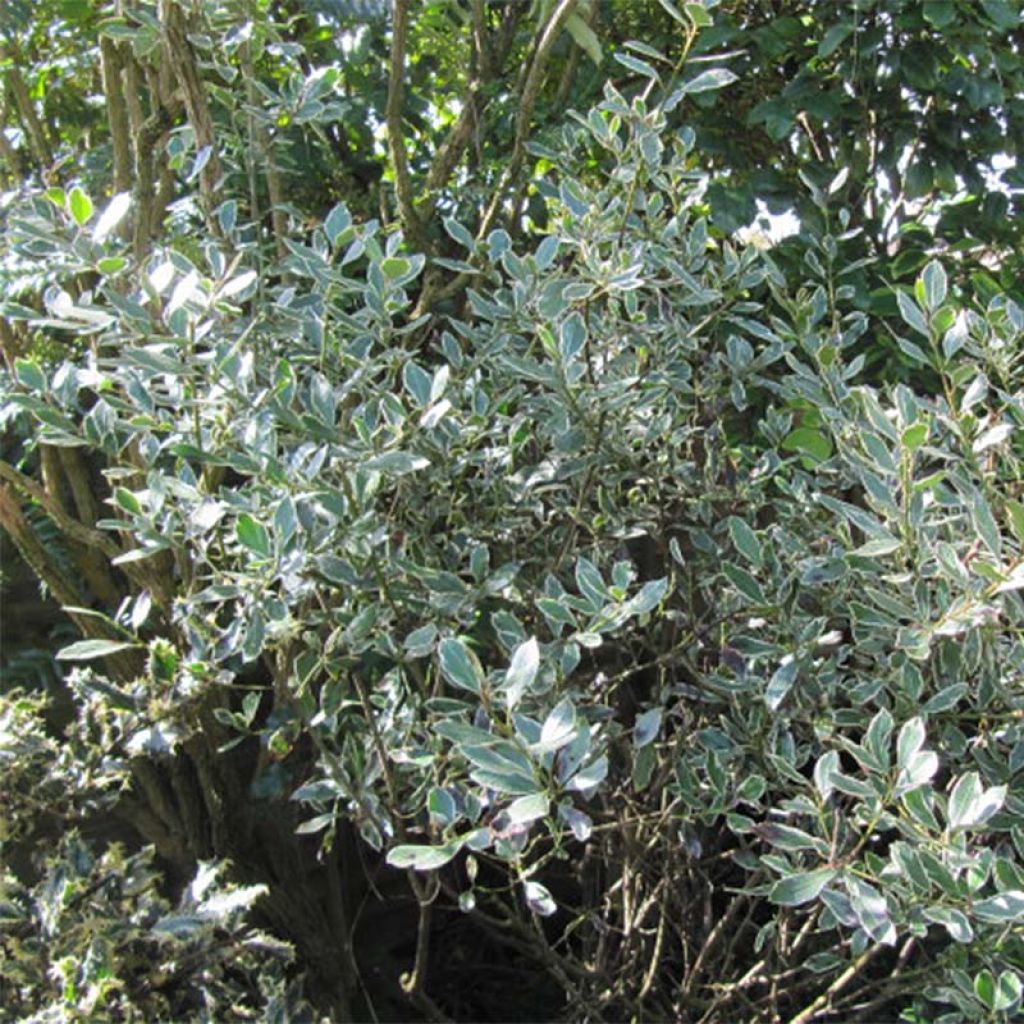

Rhamnus alaternus Argenteovariegata - Italian Buckthorn
Rhamnus alaternus Argenteovariegata - Italian Buckthorn
Rhamnus alaternus Argenteovariegata
Italian Buckthorn, Mediterranean Buckthorn
Planting in association with a Pistacia lentiscus that has the same requirements under an old oak tree. Variegated foliage. Moderate but constant growth. A good alternative when you're not sure what to plant under the foliage of imposing trees. Waiting for its definitive recovery and full growth.
Nathalie F., 20/05/2023
Special offer!
Receive a €20 voucher for any order over €90 (excluding delivery costs, credit notes, and plastic-free options)!
1- Add your favorite plants to your cart.
2- Once you have reached €90, confirm your order (you can even choose the delivery date!).
3- As soon as your order is shipped, you will receive an email containing your voucher code, valid for 3 months (90 days).
Your voucher is unique and can only be used once, for any order with a minimum value of €20, excluding delivery costs.
Can be combined with other current offers, non-divisible and non-refundable.
Home or relay delivery (depending on size and destination)
Schedule delivery date,
and select date in basket
This plant carries a 24 months recovery warranty
More information
We guarantee the quality of our plants for a full growing cycle, and will replace at our expense any plant that fails to recover under normal climatic and planting conditions.
Does this plant fit my garden?
Set up your Plantfit profile →
Description
Rhamnus alaternus Argenteovariegata, the variegated form of the Alaternus Buckthorn, is one of the most beautiful shrubs for dry shade gardens. Its spring flowering, discreet but fragrant, is followed by pretty red berries on the female plants, which turn black when ripe and delight birds in autumn. Elegant, bright and dense, and attractive all year round, it is perfectly adapted to these particularly difficult areas to design, such as root-infested woodlands and coastal gardens exposed to sea spray.
Alaternus Buckthorn can be found in fallow land, hedges, at the edge of forests, and even in oak and pine woodlands. It is also present in Turkey, Israel, Libya, and Ukraine. This particularly robust species is actually used in reforestation programs after wildfires. Rhamnus alaternus belongs to the Rhamnaceae family, and is a relative of the alder buckthorn (Nerprun purgatif) and the ceanothus. It is a dioecious shrub, with individuals being either male or female. It can live for many years in the garden.
The 'Argenteovariegata' variety stands out with its beautifully variegated white foliage, which should be protected from harsh sunlight. This shrub has a bushy, branched, upright and somewhat stiff habit; it can reach a height of 3 m (9 ft 10 in) to 3.5 m (11 ft 6 in) and a spread of 1.5 m (4 ft 11 in) to 1.75 m (5 ft 8 in), or even more in fertile soil. Its growth rate is moderate, around 20 to 30 cm (7.9 to 11.8 in) per year. Its dark brown branches bear small, alternate leaves measuring 2 to 5 cm (0.8 to 2 in) in length, which are entire, ovate to lanceolate in shape, leathery, and often toothed and cartilaginous along the edges. The upper surface of the lamina is shiny, ranging from grey-green to dark green, irregularly edged with cream-white and silvery reflections. Flowering occurs from March to May, depending on the climate, in the form of tiny yellowish to greenish flowers, devoid of petals, grouped in small clusters in the axils of the leaves. They are not very visible, but pleasantly fragrant, attracting many pollinating insects. Only the female plants, in the presence of male plants, produce these pretty red berries, highlighted by the light foliage. This variety prefers hot and dry climates in summer, as well as rocky, well-drained soils with a tendency towards limestone.
Because it is difficult to design a dry woodland populated with old trees, a garden where the soil is full of rocks, or a resistant and well-shaded hedge by the sea, horticulturists have selected this variegated Rhamnus, a true all-terrain shrub. Forming a bright silver mass, with good hardiness down to -10/-12 °C in well-drained soil, and perfectly self-sufficient once established, the variegated Buckthorn is a beautiful subject to plant in a hedge or in a bed of easy-to-grow shrubs in mild climates, or even as a standalone specimen, at the corner of a grove of small trees, for example. It forms part, along with Filarias, Pistacia lentiscus, Tin Laurel, Myrtus tarentina Variegata, and strawberry trees, of these indispensable shrubs for creating the evergreen structure of a dry garden, even in the roots of oaks or pines.
Rhamnus alaternus Argenteovariegata - Italian Buckthorn in pictures
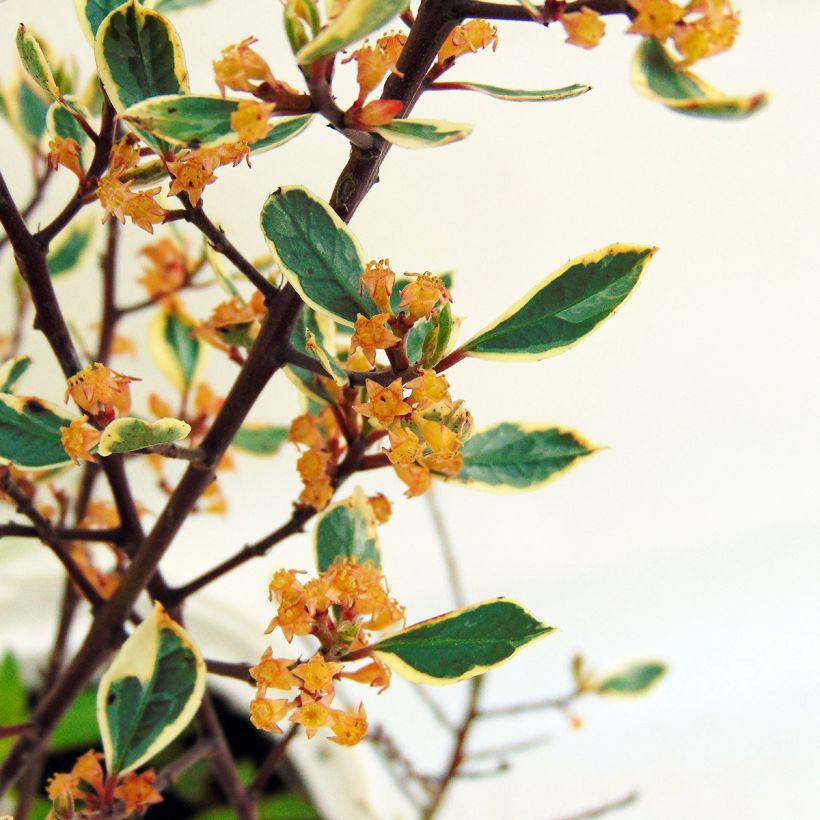

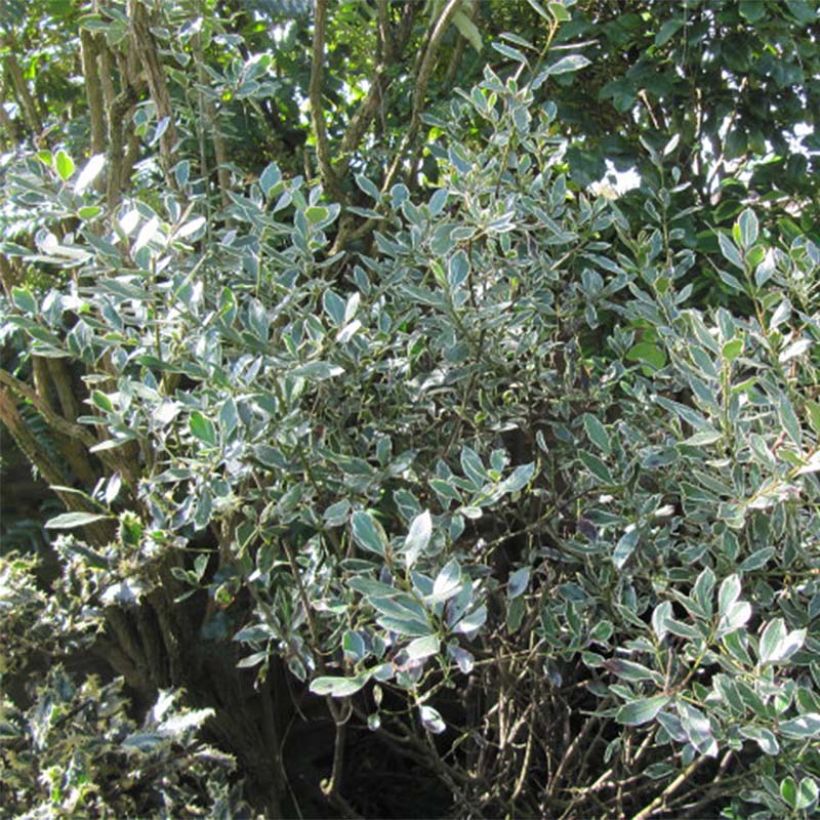

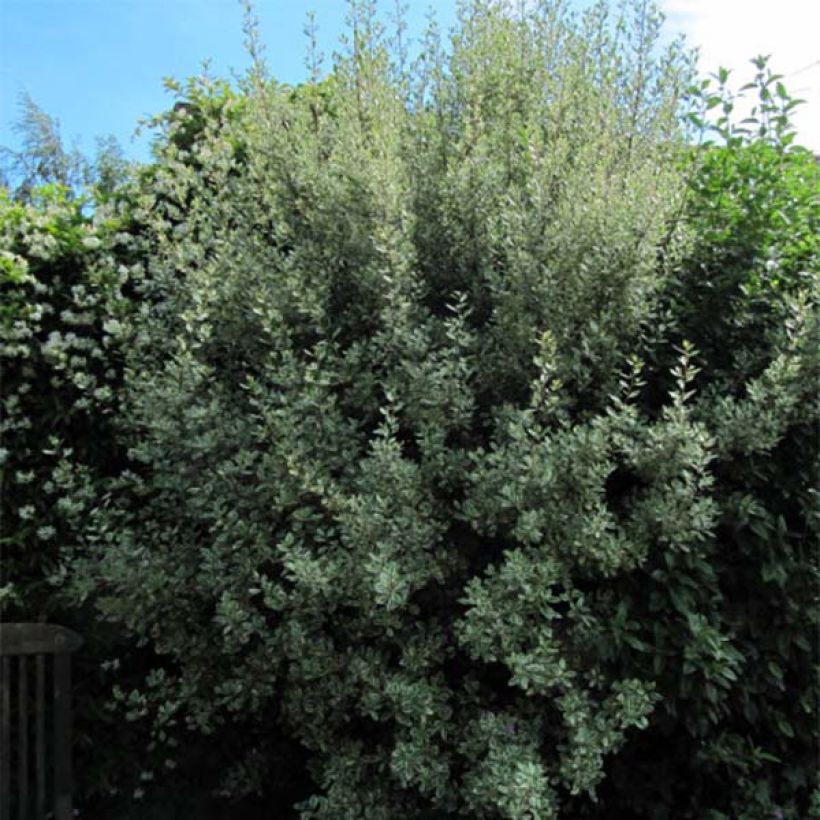

Plant habit
Flowering
Foliage
Botanical data
Rhamnus
alaternus
Argenteovariegata
Rhamnaceae
Italian Buckthorn, Mediterranean Buckthorn
Mediterranean
Other Rhamnus
View all →Planting and care
Place Rhamnus alaternus Argenteovariegata in a sunny position in a cool climate, and a partially shaded or even shaded spot in a dry and hot climate. Plant it in ordinary, well-loosened and well-drained soil. It prefers rather chalky soils, but is not very demanding and adapts to mediocre, clay-limestone, and stony soils. Summer drought is not a problem once the shrub is well established. Plant it all year round, free from frost and outside periods of intense drought, by mixing your garden soil with potting soil if it is poor, or coarse sand, perlite or any material that does not retain moisture if it is very heavy and clayey. Water generously once or twice a week to encourage growth. Water only twice a month from the third year onwards, and only in case of drought. It is a plant that requires very little maintenance and grows without difficulty as long as the conditions are met. Pruning is not essential, but you can lightly prune the stems after flowering to encourage branching. Fertiliser is not essential (just add a little horn at the bottom of the planting hole), but is sometimes useful in very poor soil. Avoid severe pruning. If you notice the appearance of stems carrying non-variegated leaves that have reverted to the species type, remove them.
Pot cultivation:
Use a lightweight substrate: a mixture of garden soil, coarse sand, and potting soil. In summer, water abundantly only when the soil is dry, but space out the watering. The plant can be stored in a cool, lightly heated or unheated room that is bright and sheltered from heavy frosts. Apply a slow-release fertiliser in spring and autumn.
Propagation is via layering, or by cutting herbaceous shoots in spring.
Planting period
Intended location
Care
Planting & care advice
-
, onOrder confirmed
Reply from on Promesse de fleurs
Similar products
Haven't found what you were looking for?
Hardiness is the lowest winter temperature a plant can endure without suffering serious damage or even dying. However, hardiness is affected by location (a sheltered area, such as a patio), protection (winter cover) and soil type (hardiness is improved by well-drained soil).

Photo Sharing Terms & Conditions
In order to encourage gardeners to interact and share their experiences, Promesse de fleurs offers various media enabling content to be uploaded onto its Site - in particular via the ‘Photo sharing’ module.
The User agrees to refrain from:
- Posting any content that is illegal, prejudicial, insulting, racist, inciteful to hatred, revisionist, contrary to public decency, that infringes on privacy or on the privacy rights of third parties, in particular the publicity rights of persons and goods, intellectual property rights, or the right to privacy.
- Submitting content on behalf of a third party;
- Impersonate the identity of a third party and/or publish any personal information about a third party;
In general, the User undertakes to refrain from any unethical behaviour.
All Content (in particular text, comments, files, images, photos, videos, creative works, etc.), which may be subject to property or intellectual property rights, image or other private rights, shall remain the property of the User, subject to the limited rights granted by the terms of the licence granted by Promesse de fleurs as stated below. Users are at liberty to publish or not to publish such Content on the Site, notably via the ‘Photo Sharing’ facility, and accept that this Content shall be made public and freely accessible, notably on the Internet.
Users further acknowledge, undertake to have ,and guarantee that they hold all necessary rights and permissions to publish such material on the Site, in particular with regard to the legislation in force pertaining to any privacy, property, intellectual property, image, or contractual rights, or rights of any other nature. By publishing such Content on the Site, Users acknowledge accepting full liability as publishers of the Content within the meaning of the law, and grant Promesse de fleurs, free of charge, an inclusive, worldwide licence for the said Content for the entire duration of its publication, including all reproduction, representation, up/downloading, displaying, performing, transmission, and storage rights.
Users also grant permission for their name to be linked to the Content and accept that this link may not always be made available.
By engaging in posting material, Users consent to their Content becoming automatically accessible on the Internet, in particular on other sites and/or blogs and/or web pages of the Promesse de fleurs site, including in particular social pages and the Promesse de fleurs catalogue.
Users may secure the removal of entrusted content free of charge by issuing a simple request via our contact form.
The flowering period indicated on our website applies to countries and regions located in USDA zone 8 (France, the United Kingdom, Ireland, the Netherlands, etc.)
It will vary according to where you live:
- In zones 9 to 10 (Italy, Spain, Greece, etc.), flowering will occur about 2 to 4 weeks earlier.
- In zones 6 to 7 (Germany, Poland, Slovenia, and lower mountainous regions), flowering will be delayed by 2 to 3 weeks.
- In zone 5 (Central Europe, Scandinavia), blooming will be delayed by 3 to 5 weeks.
In temperate climates, pruning of spring-flowering shrubs (forsythia, spireas, etc.) should be done just after flowering.
Pruning of summer-flowering shrubs (Indian Lilac, Perovskia, etc.) can be done in winter or spring.
In cold regions as well as with frost-sensitive plants, avoid pruning too early when severe frosts may still occur.
The planting period indicated on our website applies to countries and regions located in USDA zone 8 (France, United Kingdom, Ireland, Netherlands).
It will vary according to where you live:
- In Mediterranean zones (Marseille, Madrid, Milan, etc.), autumn and winter are the best planting periods.
- In continental zones (Strasbourg, Munich, Vienna, etc.), delay planting by 2 to 3 weeks in spring and bring it forward by 2 to 4 weeks in autumn.
- In mountainous regions (the Alps, Pyrenees, Carpathians, etc.), it is best to plant in late spring (May-June) or late summer (August-September).
The harvesting period indicated on our website applies to countries and regions in USDA zone 8 (France, England, Ireland, the Netherlands).
In colder areas (Scandinavia, Poland, Austria...) fruit and vegetable harvests are likely to be delayed by 3-4 weeks.
In warmer areas (Italy, Spain, Greece, etc.), harvesting will probably take place earlier, depending on weather conditions.
The sowing periods indicated on our website apply to countries and regions within USDA Zone 8 (France, UK, Ireland, Netherlands).
In colder areas (Scandinavia, Poland, Austria...), delay any outdoor sowing by 3-4 weeks, or sow under glass.
In warmer climes (Italy, Spain, Greece, etc.), bring outdoor sowing forward by a few weeks.






























